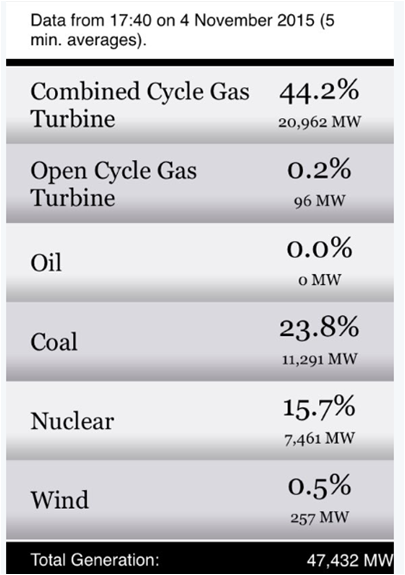National Grid uses 'last resort' measures to keep UK lights on
On 4 November 2015, Britain was made to rely on the new 'last resort' measures to keep the lights on for the first time. The measures were used as demand was forecasted an outstrip supply during the early evening of that day. Some coal power plants had extended maintenance shutdowns and the lack of wind meant that wind farms produced less than 1% of the overall electricity supply.
The National Grid issued an alert to power plants on 4 November, stating that more generation would be needed between 4.30pm and 6.30pm. The alert, called a 'Notification of Inadequate System Margin' (NISM), was used for the first time.
The National Grid relied on their scheme called 'Demand Side Balancing Reserve' (DSBR) to reduce demand on the Grid by around 40MW. The emergency scheme consists of paying large business to cut their electricity usage; this resulted in 46 large office buildings having to power down between 5pm and 6pm, mostly by turning down building ventilation.
The scheme is paid for through levies on consumer bills (estimated about 50p per year) and is one of two emergency schemes introduced last year to help cope with Britain's tightening power margins. Business volunteer to take part in the DSBR scheme and are paid a retainer, in return for agreeing that they will receive additional payments to cut their demand (as in this case) if needed.
The alternative scheme, which has so far not been used, sees a reserve of old power plants being fired up.
It was previously said by the Nation Grid that the DSBR scheme would be used: "as a last resort in the event that there is insufficient supply available in the market to meet demand."
The power crunch has been blamed on "multiple plant break downs." Several coal-fired power plants had unexpected maintenance issues and temporarily shut down on the Wednesday in question. The problem was worsened by low wind speeds on the day, leaving most of Britain's onshore and offshore wind turbine generating barely on power just when it was needed most. Britain's 8,000 megawatts of solar panel capacity would also have produced no power during the peak, because it was dark at the time.
Below are percentages of power being generated on the day:

A spokesman for the National Grid has said that the scheme being used did: "not mean we were at a risk of blackouts," but that "we needed that safety cushion of power in reserve to be higher."
For more information, help or advice please contact Andrew Davison on 0191 211 7950 or email [email protected].
